As an afternoon snack or an accompaniment to a full meal, sausages are an integral part of Portuguese cuisine. In fact, it’s quite a challenge to find a meat dish in Portugal without at least one kind of enchido, or traditional Portuguese sausage. You can find it in cozido, feijoada (bean stew) or even mixed in soups like caldo verde.
Whether you like them raw, grilled, baked or fried, there are endless ways of eating Portuguese sausage. If you need a little introduction, this guide explains all the varieties you might find and the best way to eat them.
One way to sample them all at once is to order a sausage board (tábua de enchidos). While you’re at it, why not try some Portuguese cheese, too? It’s a perfect match!
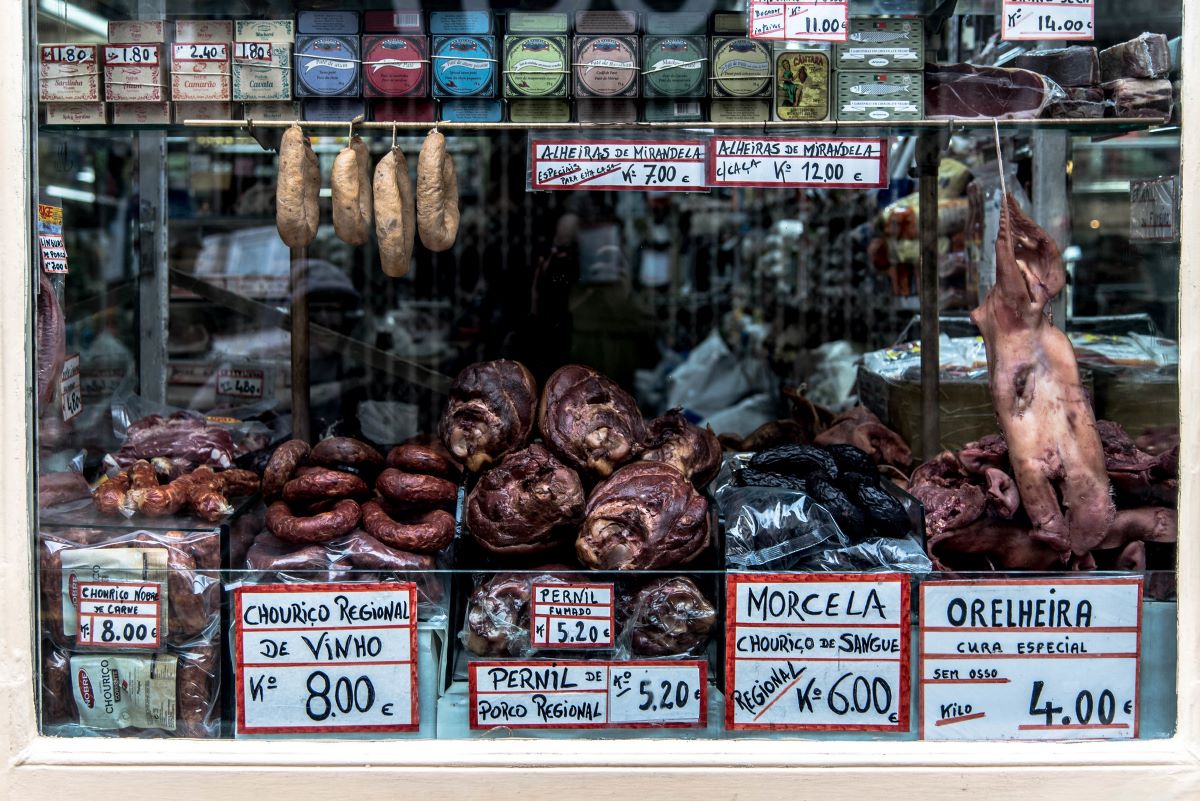
Essential varieties of Portuguese sausage to try
Chouriço
Chouriço is the most versatile Portuguese sausage and a staple petisco in the local tascas. Made with pork meat, it’s similar to Spanish chorizo, but has less paprika than its neighbor to the east, and tastes a bit smokier. Here in Portugal, chouriço goes hand in hand with dishes like caldo verde soup and arroz de pato (duck rice).
You can have it cold, but the best way to eat it is in the form of flame-grilled chouriço assado. More than a mere dish, this is a full culinary experience!
When you order chouriço assado at a restaurant, your server will bring the sausage to your table on a clay dish. Then, they’ll light it up right in front of you.
Once it’s on the table, you can cook the chouriço for as long as you like. For a perfect chouriço assado, the outside of the sausage should be slightly burned and crispy.
While you’re out and about, be sure to also try pão com chouriço (chorizo bread), a popular Lisbon street food that’s as simple—and as delicious—as it gets.
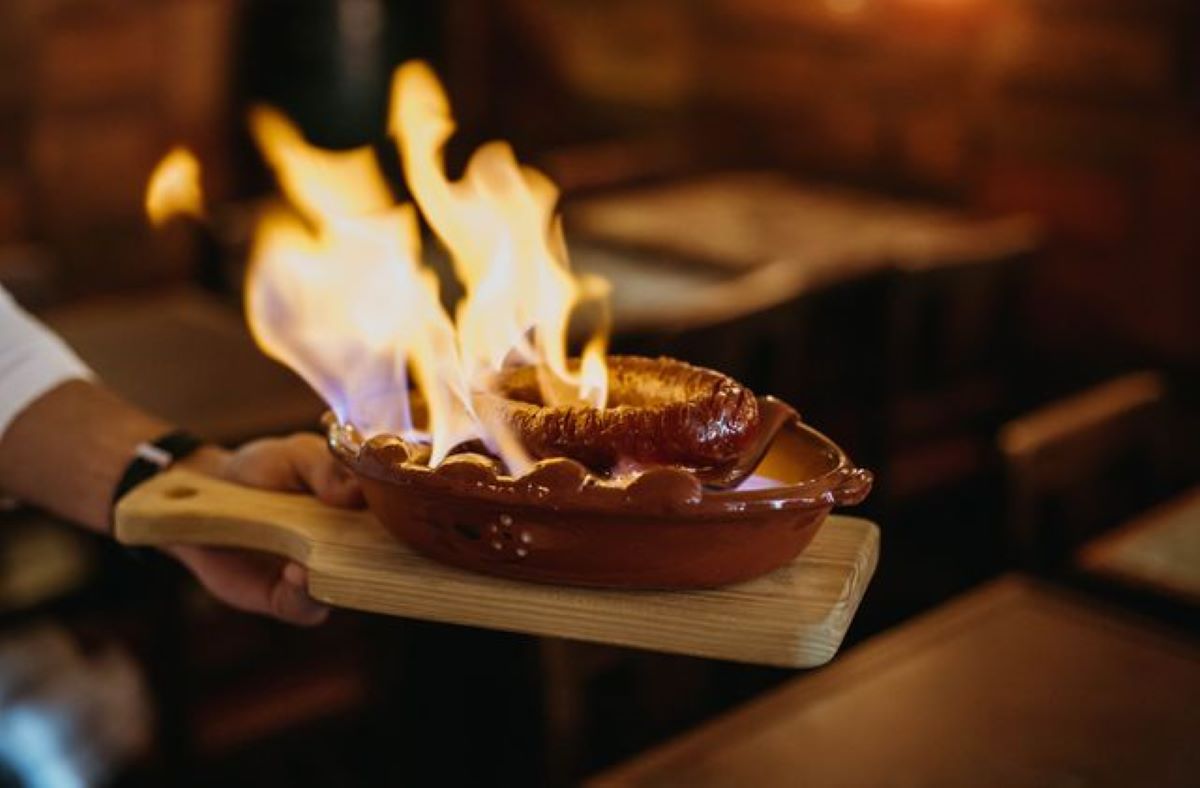
Linguiça
Linguiça is a thinner version of chouriço with some heavier notes of paprika, chilies, and garlic.
It has a similar flavor profile to chouriço, thanks to the paprika, but is noticeably heavier on the garlic.
Usually fried, this Portuguese sausage is an essential ingredient in the francesinha, Porto’s signature meat sandwich.
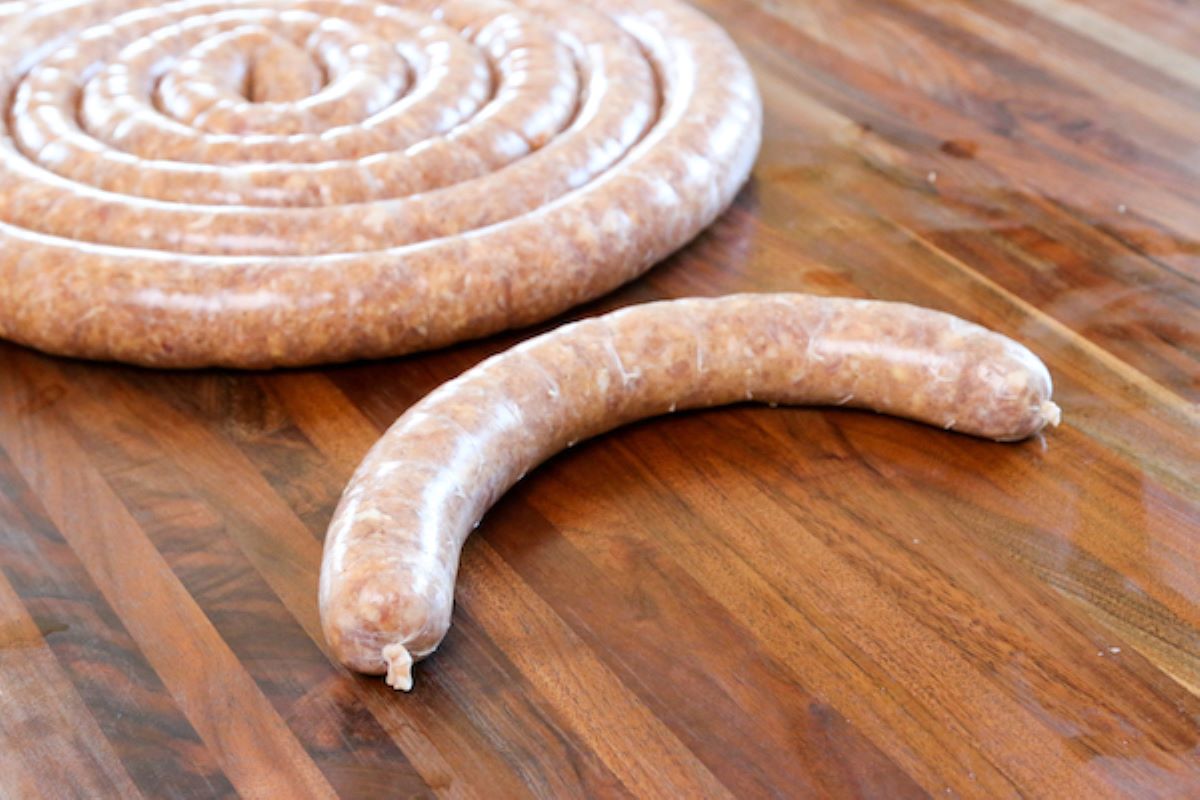
Morcela
Morcela is a blood sausage, typically served in rural regions of Portugal like Guarda and Portalegre.
Besides pork meat, morcela also has the animal’s blood, which gives it a different consistency (soft and crumbly) and a darker color compared to chouriço and linguiça. Seasonings include several spices such as cloves and cumin, which add to its strong flavor.
Don’t worry if you’re a little squeamish—you can still try this typical Portuguese sausage. In the region of Leiria, there’s a version of morcela with rice—morcela de arroz—which is made both with and without blood.
Insider’s Tip: You can eat morcela as part of a dish like cozido or feijoada, but we like to eat it by itself straight from the oven and spread on a piece of bread.
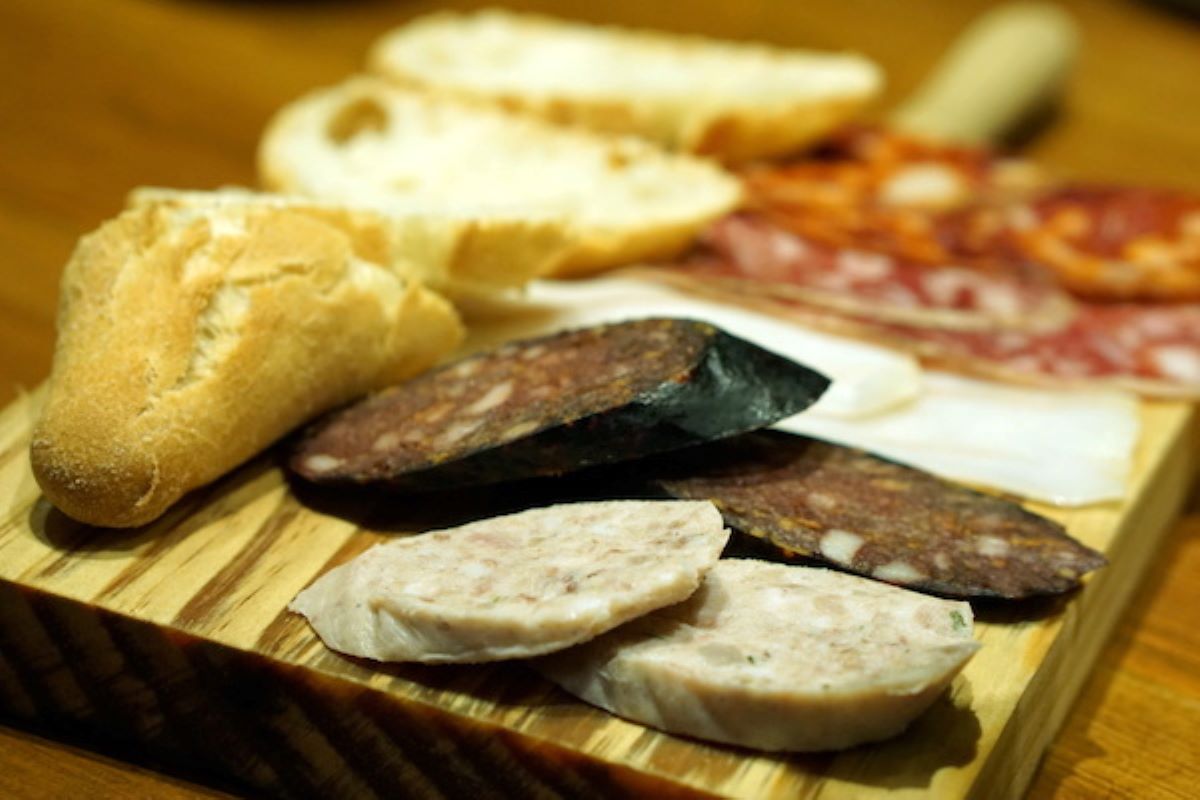
Farinheira
The name farinheira comes from the word farinha, meaning “flour” in Portuguese. As you might have guessed, flour is one of the main ingredients of this smoked Portuguese sausage, along with pork fat, garlic, white wine, and massa de pimentão (bell pepper paste).
Like morcela, you can eat it with bread, but it’s also common to mix it with scrambled eggs (look for ovos mexidos com farinheira).
It has an orange-ish color and tastes sweeter than chouriço. Once cooked, farinheira turns into a delicious soft paste, perfect to spread on bread.
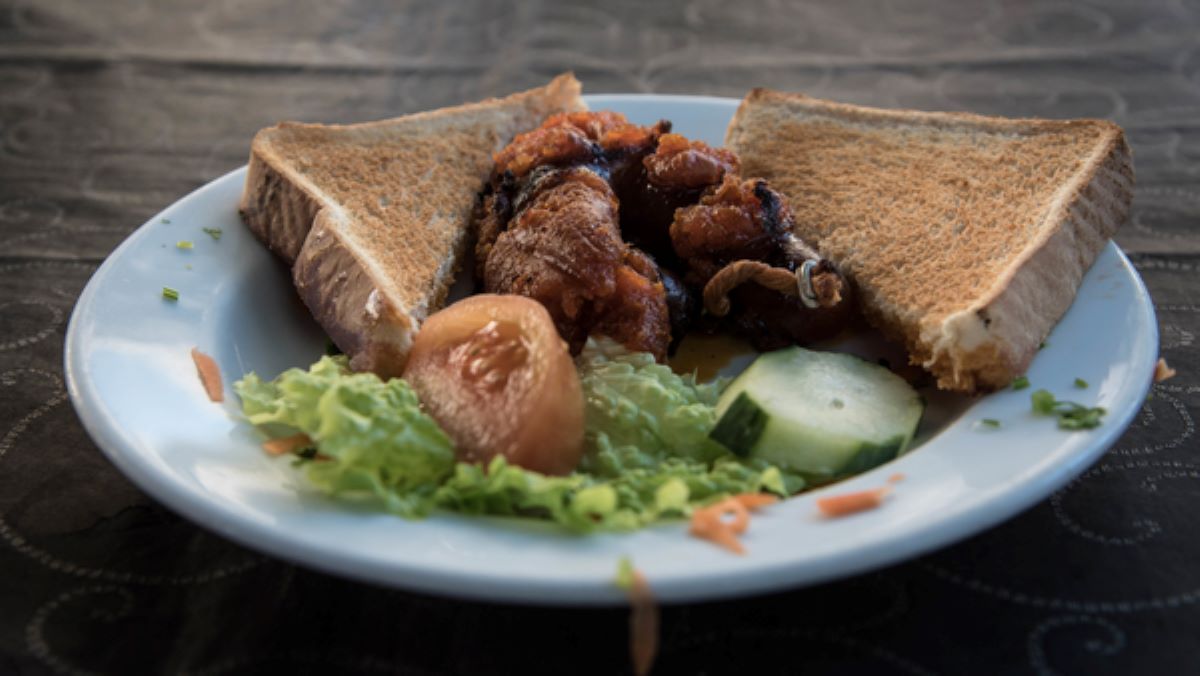
Alheira
Most Portuguese sausages have always contained pork, but alheira is an exception.
In the 15th century, Portuguese Jews created this sausage as a way to deceive the Inquisition. Since they couldn’t eat pork, they made sausages with other kinds of meat like poultry and game, adding bread for texture. Garlic (alho in Portuguese) was also a common ingredient, hence the name alheira.
These days, you can find alheira with or without pork. The most famous variety comes from the region of Mirandela in the north of Portugal. There, locals like to eat it grilled and accompanied with boiled potatoes.
In the south, however, it’s more common to see fried alheira served with french fries and a fried egg.
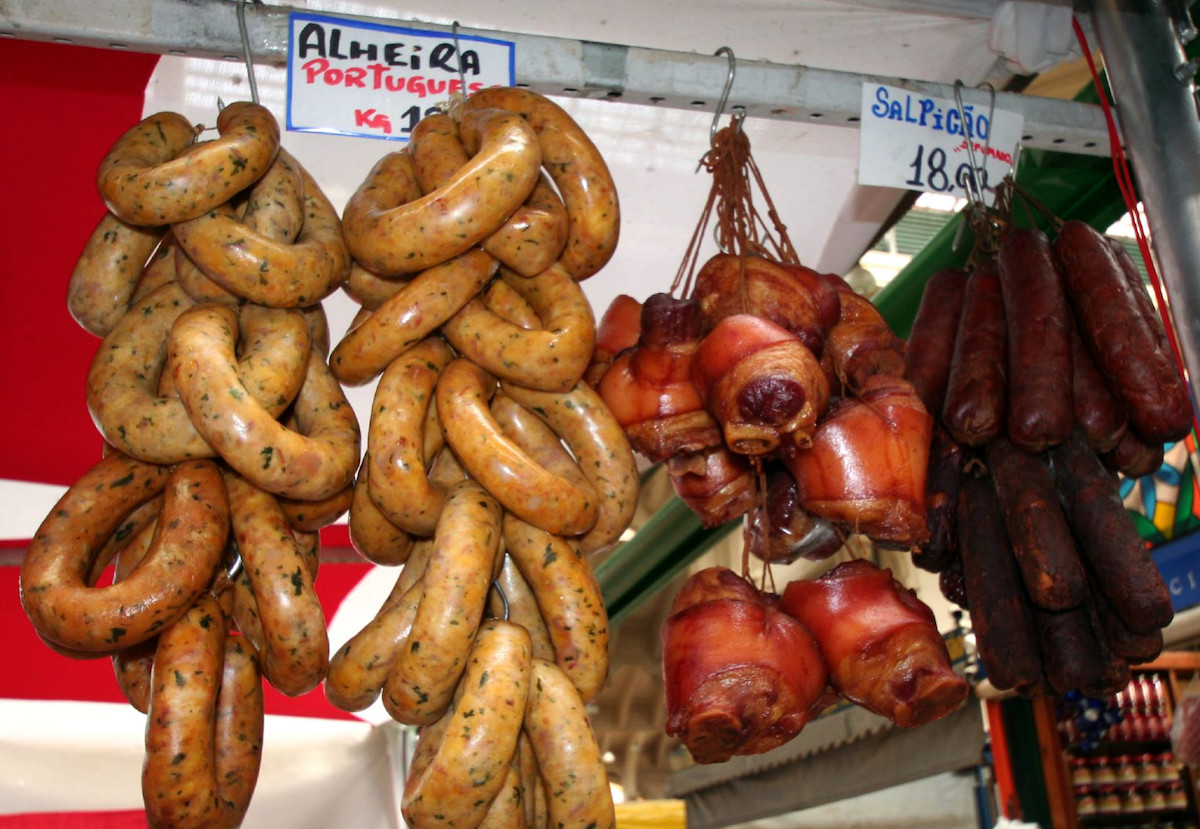
Salpicão
If you order a Portuguese sausage board, it will probably include a bit of salpicão.
Hailing from the northern region of Trás-os-Montes, this Portuguese sausage combines pork loin with wine, garlic, bay leaves, and sweet or hot paprika.
It’s usually sliced into thin pieces and eaten raw with a piece of bread.
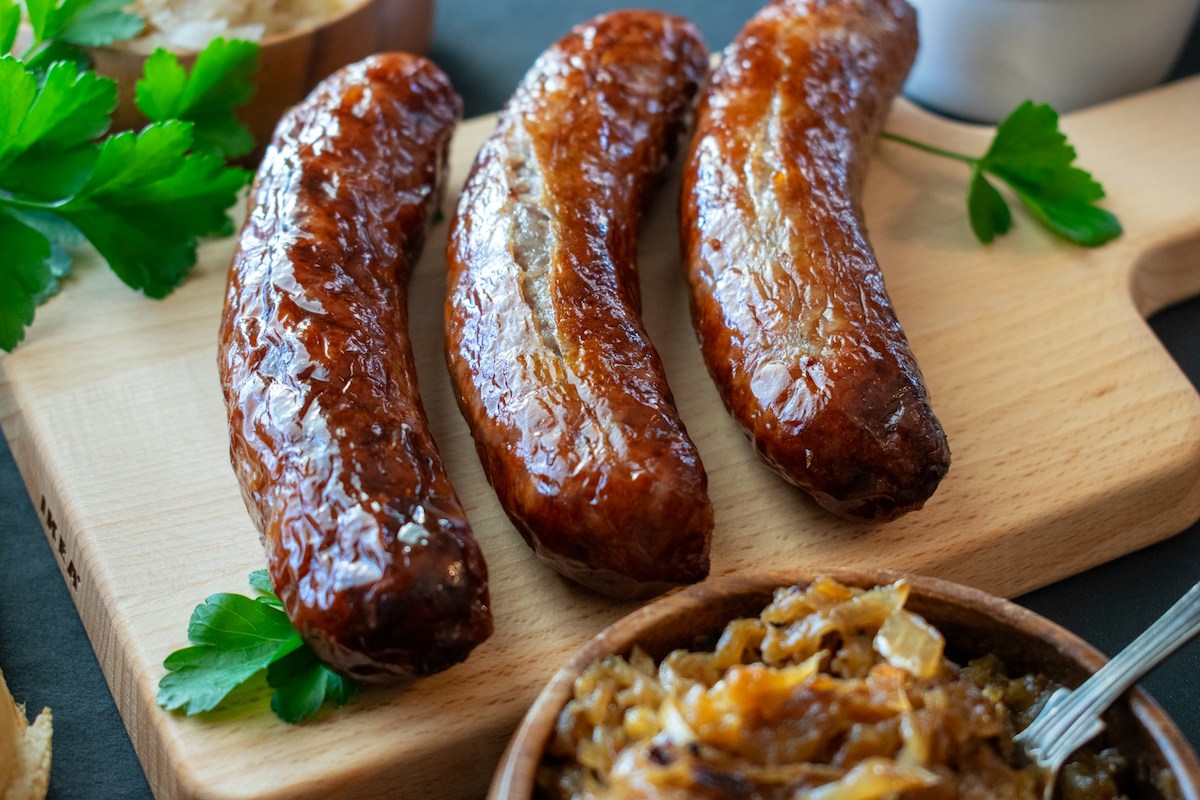
Paio
Paio is made of pork loin and seasoned with garlic, salt and sometimes red pepper paste. It resembles the salpicão, but it’s larger in diameter.
In supermarkets, you’ll often find paio cut into slices, making it a good option for sandwiches.
There’s also another variety in the Alentejo region known as paio branco (white paio) which is lighter in color since it doesn’t include red pepper.
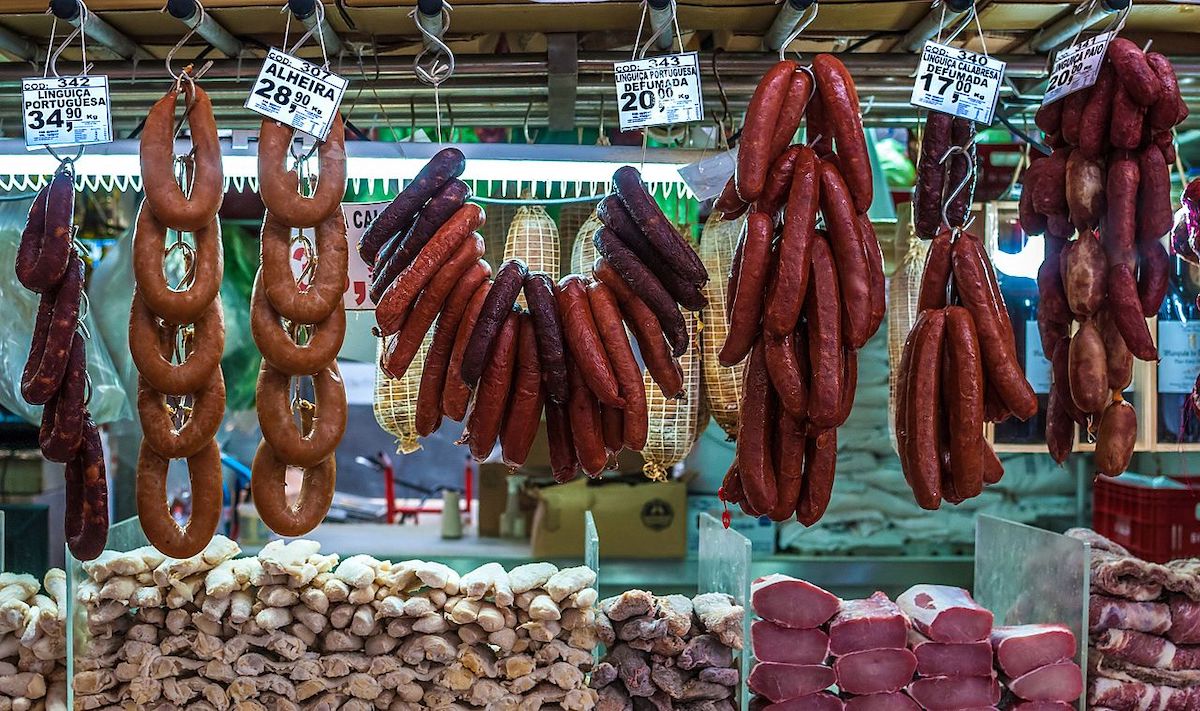
How long does Portuguese sausage last?
Some Portuguese sausages like chouriço, linguiça, and salpicão can last up to three months when stored in a cool and dry place. Still, you should keep an eye out for mold!
If you bought a farinheira, it’s best to eat it within 15 days after your purchase. Note that packages of sausage from a supermarket will include an expiration date.
The best way to preserve the sausages after you open them is to rub them with a bit of olive oil near the area you cut. While the olive oil will change the flavor slightly, it prevents the mold.
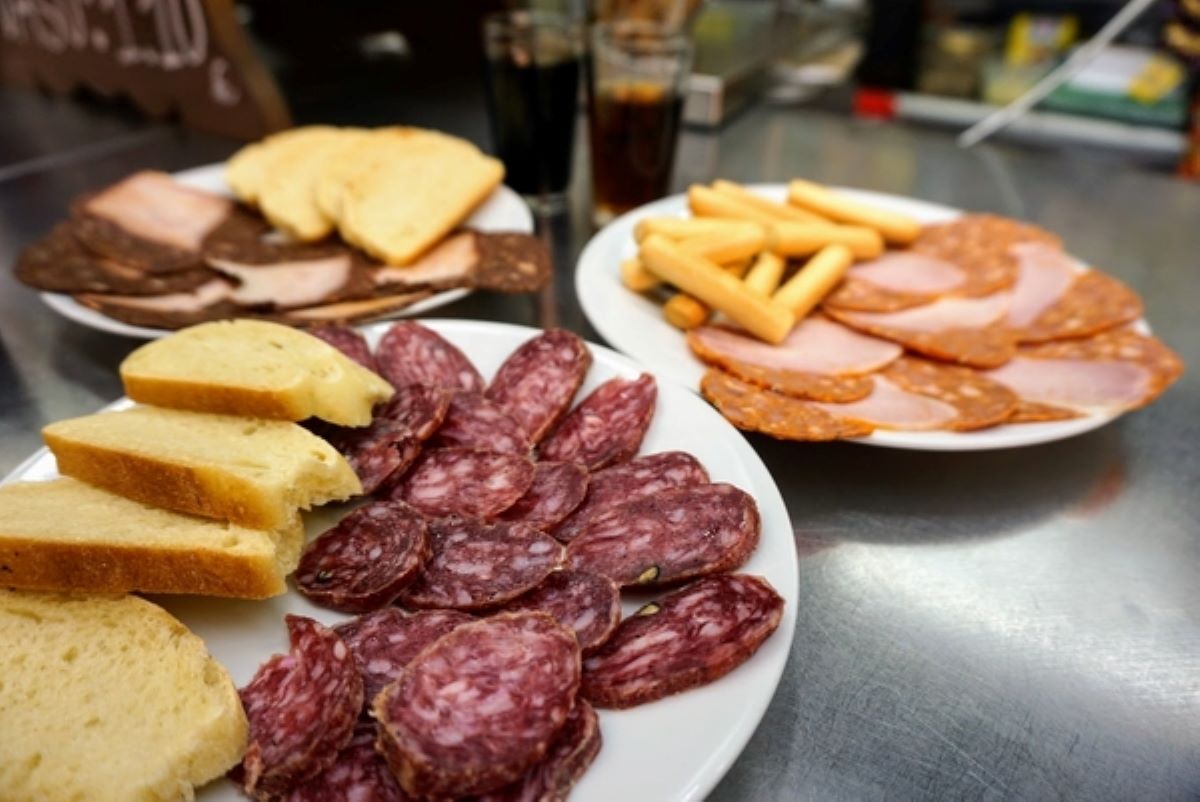
Update Notice: This post was updated on February 1, 2024.
If you want to find a place to sit down and try out these Portuguese sausages the authentic way, at a real petiscos bar, we try two of the above varieties on our Bairro Alto Evening Food & Wine Tour—but you’ll have to come along with us to find out which ones! There is also the Tastes & Traditions of Lisbon Food Tour where you can try 9 tastes and three drinks at 7 different small businesses in Lisbon. Definitely a traditional route you will want to do during your stay in the city.

We have the Chouriços in Goa too, they’re very popular, you’ve guessed it, they’re often eaten with pao, they also flavor vegetables, stews etc
That sounds delicious! Thanks for sharing, Sanyoj!
Hard to find chorizo in MN. HeArd Saulk Ctr.
Might have an outlet.
Hi Walt, check out Chaves Market (https://www.chavesmarket.com/) or BuyPortugueseFood.com, both of which sell authentic Portuguese products and ship throughout the US! Happy cooking!
Thank you for this information!
I’m cooking for a Brazilian Family in the Bahamas right now and picked up some sausages at a local Brazilian supermarket in Miami before departure. The Paio will go great with cheeses at the beach!
Sounds like an awesome cookout! Thanks for reading! 🙂